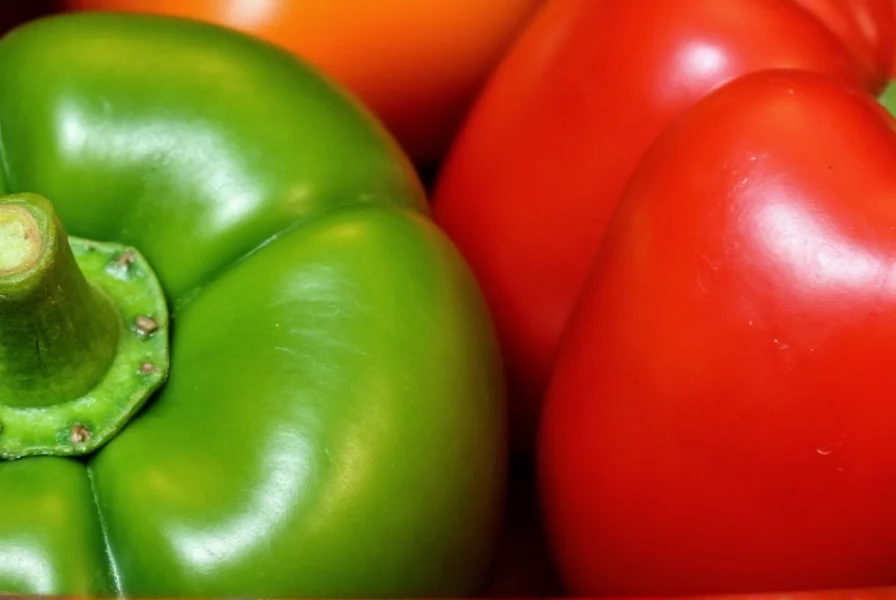Understanding exactly how spicy is a serrano pepper requires examining its position on the Scoville scale, the industry standard for measuring chili pepper heat. These slender, bright green peppers deliver a clean, grassy heat that builds quickly but doesn't linger as long as some hotter varieties. The heat intensity varies based on growing conditions, maturity, and even individual pepper characteristics.
Decoding Serrano Pepper Heat Levels
Serrano peppers (Capsicum annuum) originated in the mountainous regions of Mexico, where "serrano" means "from the mountains." Their heat profile makes them ideal for salsas, guacamole, and garnishes where you want noticeable spice without overwhelming heat. Unlike some peppers that vary wildly in heat, serranos maintain relatively consistent spiciness within their established range.
| Pepper Variety | Scoville Heat Units (SHU) | Heat Relative to Serrano |
|---|---|---|
| Serrano Pepper | 10,000-23,000 | 1x (baseline) |
| Jalapeño Pepper | 2,500-8,000 | ⅕ to ½ as hot |
| Habanero Pepper | 100,000-350,000 | 5-15x hotter |
| Cayenne Pepper | 30,000-50,000 | 1.5-2x hotter |
| Thai Bird's Eye | 50,000-100,000 | 3-6x hotter |
Factors That Affect Serrano Pepper Heat
Several elements influence how hot are serrano peppers compared to jalapenos and other varieties:
- Maturity stage: Green serranos (harvested early) tend to be milder than red, orange, or yellow varieties allowed to ripen fully on the plant. Fully mature serranos can reach the upper end of their heat range.
- Growing conditions: Stressors like inconsistent watering or nutrient-deficient soil often produce hotter peppers as the plant's defense mechanism.
- Part of the pepper: The placenta (white membrane surrounding seeds) contains the highest concentration of capsaicin, the compound responsible for heat. Seeds themselves contain less capsaicin but become hot from contact with the membrane.
- Individual variation: Even on the same plant, heat can vary significantly between peppers.

Practical Uses for Serrano Peppers
When working with serranos, understanding are red serrano peppers hotter than green helps in recipe planning. Red serranos typically deliver more complex flavor with slightly increased heat compared to green varieties. Their thinner walls make them easier to chop finely for raw applications compared to thicker-walled jalapeños.
Chefs often prefer serranos for:
- Salsas verdes where clean heat is desired without overwhelming smokiness
- Infusing oils and vinegars (remove after 1-2 weeks to prevent over-extraction)
- Garnishing tacos and soups for immediate heat impact
- Adding subtle heat to fruit-based sauces and chutneys
Safety Tips for Handling Hot Peppers
Proper handling is essential when exploring how to handle serrano peppers safely. The capsaicin that creates heat can transfer to skin and eyes:
- Wear disposable gloves when chopping serranos
- Avoid touching your face during preparation
- Wash hands thoroughly with soap and water afterward (alcohol-based sanitizers can spread capsaicin)
- If heat transfers to skin, use milk or yogurt to neutralize rather than water
- Remove seeds and membranes for milder heat in recipes

Common Misconceptions About Serrano Heat
Several myths persist about serrano pepper scoville units range and heat characteristics:
- Myth: Size determines heat level
Reality: Smaller serranos aren't necessarily hotter; heat depends more on maturity and growing conditions - Myth: Cooking reduces heat significantly
Reality: Heat remains stable during cooking; it only redistributes throughout the dish - Myth: All serranos are uniformly hot
Reality: Individual variation means one serrano might be mild while another from the same batch is extremely hot
When to Choose Serranos Over Other Peppers
Understanding how spicy is a serrano pepper compared to other varieties helps in recipe substitution. Serranos work best when you need:
- Clean, immediate heat without smokiness (unlike chipotles)
- More heat than jalapeños but less than habaneros
- Thin-walled peppers that integrate well in fresh preparations
- A grassy, vegetal flavor profile that complements tomatoes and citrus
For those sensitive to spice, start with half a serrano in recipes and adjust upward. Remember that heat perception varies significantly between individuals based on genetics and tolerance.
Frequently Asked Questions
How does serrano pepper heat compare to jalapeño?
Serrano peppers are significantly hotter than jalapeños, measuring 10,000-23,000 Scoville Heat Units compared to jalapeños' 2,500-8,000 SHU. On average, serranos are 2 to 5 times hotter than jalapeños, with a cleaner, more immediate heat that doesn't linger as long.
Are red serrano peppers hotter than green ones?
Yes, red serrano peppers are typically hotter than green ones. As serranos mature and change color from green to red, orange, or yellow, their capsaicin content increases, often reaching the upper end of their 10,000-23,000 SHU range. Red serranos also develop more complex, slightly sweeter flavor notes.
What part of the serrano pepper is hottest?
The white pithy membrane (placenta) surrounding the seeds contains the highest concentration of capsaicin, making it the hottest part of the serrano pepper. While many people think the seeds are hottest, they actually absorb heat from contact with the membrane. Removing both seeds and membrane significantly reduces the pepper's heat level.
How can I reduce the heat of serrano peppers in cooking?
To reduce serrano pepper heat, remove all seeds and the white membrane before using. Soaking chopped peppers in vinegar or citrus juice for 15-20 minutes can also mellow the heat. Cooking with dairy ingredients like yogurt or cheese helps counteract capsaicin. For significant heat reduction, consider substituting half the serranos with milder peppers like poblano.
Can I substitute serrano peppers for jalapeños in recipes?
Yes, but with caution. Since serranos are 2-5 times hotter than jalapeños, use approximately half the amount of serranos when substituting. For example, if a recipe calls for 2 jalapeños, start with 1 serrano and adjust to taste. Remember that serranos have thinner walls and a slightly different flavor profile, so the texture and taste will vary slightly in the final dish.











 浙公网安备
33010002000092号
浙公网安备
33010002000092号 浙B2-20120091-4
浙B2-20120091-4